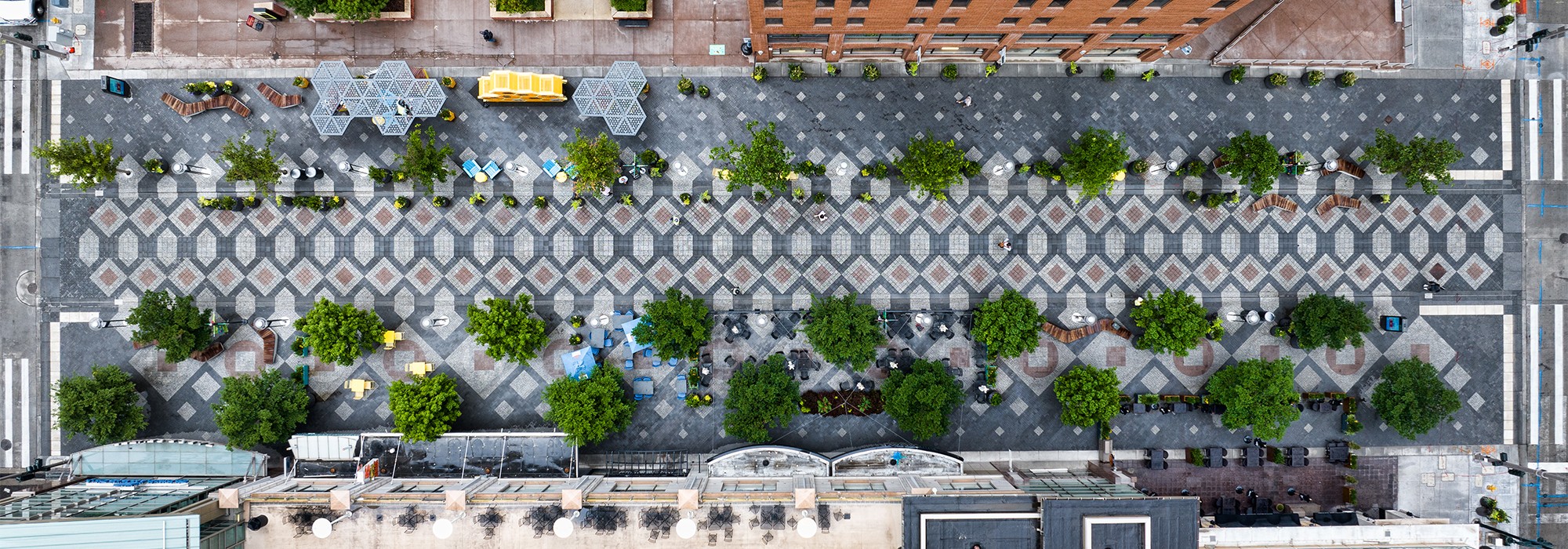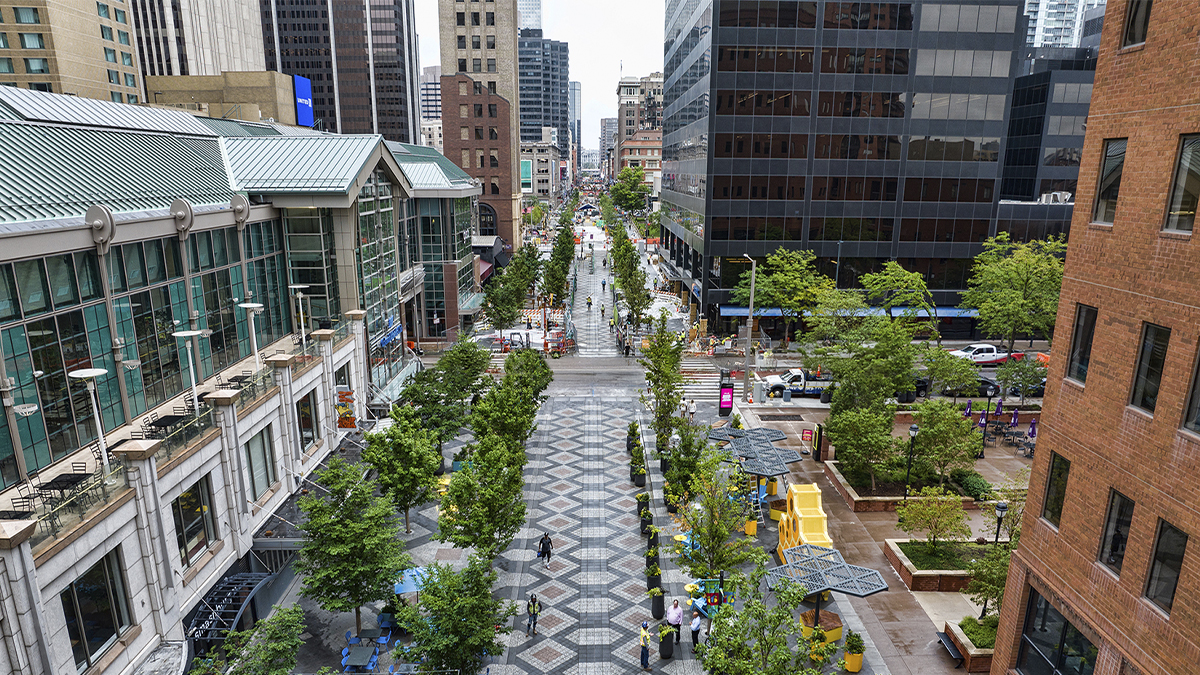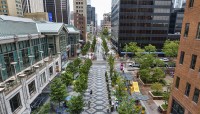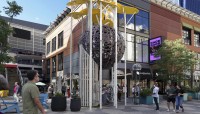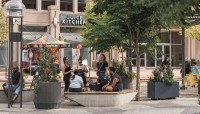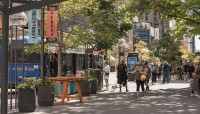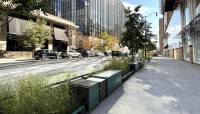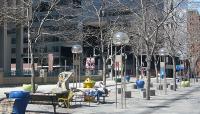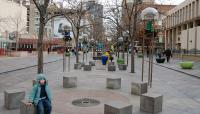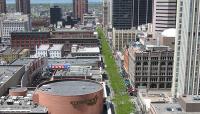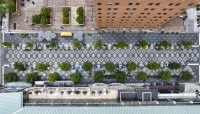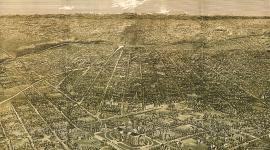Landscape Information
Designed by architects I.M. Pei & Partners (now Pei Cobb Freed & Partners) in collaboration with landscape architects Hanna/Olin (now OLIN), the mall was developed to facilitate public transportation for both downtown and outlying areas, while revitalizing the city’s urban core. Since Denver’s earliest days, 16th Street was a hub for commercial development, serving as the main parade route for civic celebrations. In 1971, Downtown Denver Inc. (now Downtown Denver Partnership) proposed closing nine blocks to vehicular traffic; several years later construction began. The 16th Street Mall subsequently opened in 1982. Its design of the 80-foot wide, mile-long mall incorporated custom paving and a gracious, 22-foot-wide, honey locust-lined promenade flanked by recessed transit lanes and widened sidewalks.
In 2008 the city began a sixteen-year-effort to rehabilitate the mall ultimately engaging Dig Studio, landscape architects. In addition to returning the name to simply, “16th Street,” several elements were updated. The central promenade was converted into a transit lane, with former lanes absorbed into adjacent sidewalks. Thus, two ample walkways could accommodate outdoor gatherings. A new, suspended paving system was implemented, and the monoculture of honey locust trees were replaced by a mixed species palette of 220 trees that include honey locust, elm, oak, and maple. Despite these changes, the original light fixtures were restored and upgraded, and the character-defining carpet of diamond-patterned, charcoal gray, light gray, and Colorado red granite pavers was successfully replicated.
The previous design was conceived as an inviting pedestrian thoroughfare, connecting two of the city’s most prominent Modernist designs—Zeckendorf Plaza and Skyline Park—but only 16th Street remains largely intact.
The project received a Professional Award in the Design Category from the American Society of Landscape Architects in 1985.



